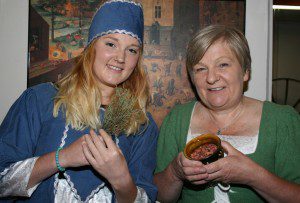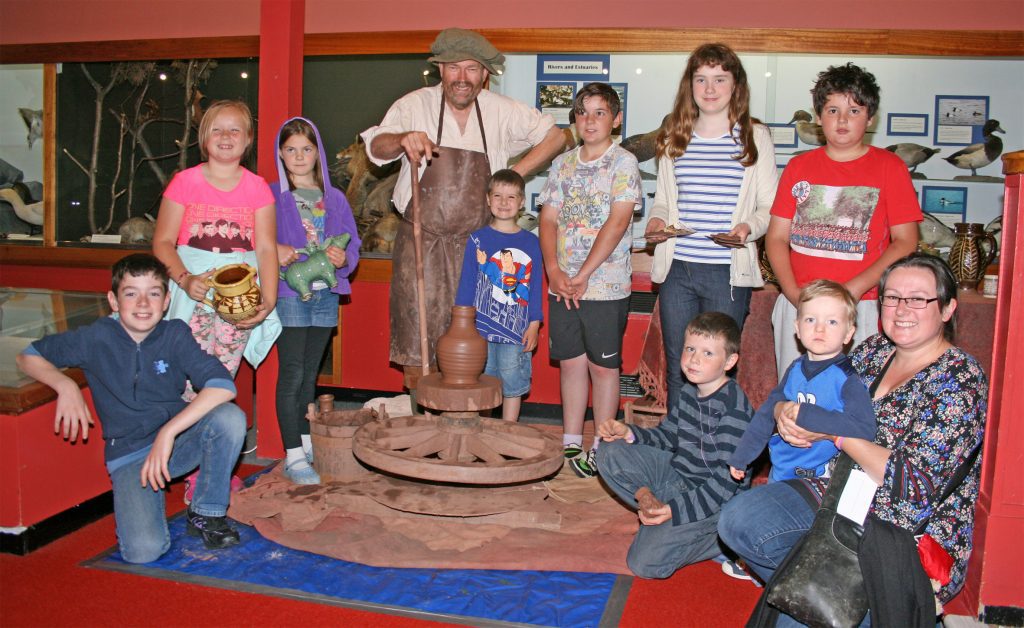Summer at “The Merchant’s House” in Dumfries Museum

Dumfries Museum has a great line up of free summer activities for families. The theme for this summer is life in the period from Robert the Bruce to Robert Burns. There are family activities available in the museum galleries during normal opening hours and special workshops are taking place throughout the school holidays. The theme for this summer was chosen to celebrate the refurbishment of the museum case which holds objects relating to life in a merchant’s house of the 16th to 18th century.
The summer programme got off to a flying start with the ever cheerful Master Potter Graham Taylor on Tuesday 8 July. He demonstrated how medieval pots were made and offered over eighty children and adults the opportunity to make green man clay tiles.
Drop in gallery activities include dressing up, a medieval banquet table with lots of handling objects to pick up and investigate, a scented medieval medicine cabinet of herbs, gallery trails, quizzes, colouring sheets and a green man mask to make.
The Countryside Ranger Service and Simon Lidwell (Wordsmithcrafts) will be running further booked workshops and some drop in activities throughout the school holidays. The full programme of exhibitions and events for Dumfries Museum is available at www.dumgal.gov.uk/artsandmuseums.
For further information contact: Fiona Wilson, Museums Officer – Access, Community and Customer Services
Telephone: 01387 253374 Fax: 01387 265081 E-Mail: [email protected]
“The Merchant’s House”
Following the Reformation in 1560 the power of the monasteries declined. The Burgh of Dumfries was raided, destroyed and rebuilt several times during the Border Wars of the late 1500s. Natural disasters such as floods and the plague also took their toll but despite this Dumfries flourished as a trading port from the late 16th to 18th centuries.
Merchants prospered during this time, forming part of the wealthy elite of the town community. The merchants had two votes to every one exercised by the trade deacons and held sway over the governance of the town, monopolising the office of Provost until the 19th century.
This upwardly mobile social class had enough money to buy expensive personal possessions, build houses and furnish them with luxury goods. They even paid to protect their homes against fire, a major consideration in the packed streets of wooden framed buildings warmed by open fires and lit by candles and oil lamps
Although relatively well off, domestic life in the merchant’s house had changed little from medieval times. Heating, lighting and cleaning the house and linen still involved arduous manual labour. Cooking was done over an open fire in heavy metal pots and served mainly on wooden platters although pewter, silver or gold may have been used depending on the wealth of the family.





